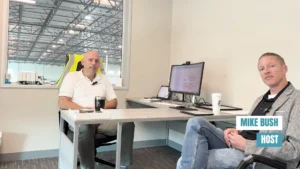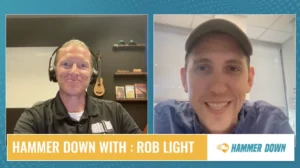American and Virgin Place Orders for Flying Taxis
Vertical Aerospace Group, based in Bristol, England, won conditional orders for as many as 1,000 electric aircraft that could total $4 billion from buyers including American Airlines Group Inc. and Virgin Atlantic Airways.” Tune in below as Vertical Aerospace Group CEO Stephen Fitzpatrick breaks down the purchases and the opportunity for growth in the aerospace market.
Host: So obviously a lot going on, so let’s just start with the opportunity here, where are you in your own flight path?
Fitzpatrick: Yeah, Thanks so much for having me, vertical launched in 2015. So we’re six years in and we’ve flown two full scale prototypes already, the vehicle that we’re launching and launching and that we’re partnering with American and Virgin with its x4, four passengers piloted. The moment in the test flight program will start later this year, Q4.
Host: OK, so flying taxis sounds amazing, especially if I was trying to get around in rush hour. And yet there is a question of, first of all, how feasible. It is. I mean, I’m probably not going to happen and drive why nobody wants to see that. And also whether this is catering to the common man and woman. Can you give a sense of how you envision flying taxis falling into the transportation ecosystem?
Fitzpatrick: Yeah, sure. So first of all, I think one of the most important things is that people who are skeptical, and that’s completely justified, right so these are new aircraft and we have a lot to prove. The one thing I would say is the technology that we’re using. It already exists today. This is not based on some new battery system or some new electric motor that we need to invent. All of the technology we use in vertical is based on today’s existing technology, most of it developed for the automotive sector. And now we’re repurposing it for aerospace. But, you know, we still need to be able to build and most importantly, certify these aircraft to the same safety standards as today’s commercial airlines. And that’s a really, really high bar. Airplanes are safe for a reason. Regulations are extremely challenging to meet. And and so that’s the challenge for us and for all (flight) companies. But the benefits are huge. So if you think about helicopters, they’re really useful. They’ve been around for 50, 60 years, but they’ve got a lot of problems. They’re dirty, they are high emissions, they’re noisy, they’re expensive and they are dangerous.
And if you look at the vehicles we’ll be developing, we’re talking about transportation that’s 100 times safer than a helicopter, same standard as a commercial airliner. It’s 100 times wider and it’s a fifth of the price. So it’s about $1 per passenger mile, which in Europe, that’s about the same price as rail fare. In the us, it’s about the same price as taking a taxi on your own. So this is definitely going to democratize urban air mobility, what we would call helicopter travel. And you’re talking about JFK to Manhattan, 12 minutes and $40 a ticket. So really affordable for every man.
Host: So let me just ask you, Stephen, obviously big airlines are interested. They’re investing. You know, they see something here right around the world. It’s that last mile, I guess, that’s appealing. How long before at least is hopping on in an air taxi? How long before people are actually using the service and it’s affordable?
Fitzpatrick: So we think certification is going to be around 2024, 2025. Like I said, we’re using existing technology and we’re already well through our certification program. And you’re going to see, you know, first of all, a relatively slow ramp up. Obviously, there’s going to need to be city permitting, the local airspace regulation, but this is going to be a reality in the next five years. And as I said, airlines are already getting well into this night to see how this is going to change their business models and how they’re going to connect passengers to the airports.
*Bloomberg contributed to this content
—
Follow us on social media for the latest updates in B2B!
Twitter – @MarketScale
Facebook – facebook.com/marketscale
LinkedIn – linkedin.com/company/marketscale








